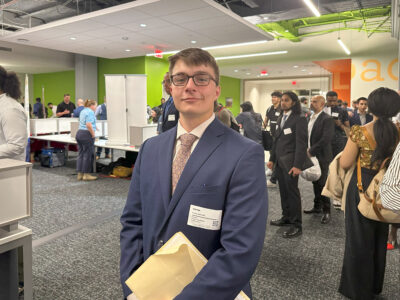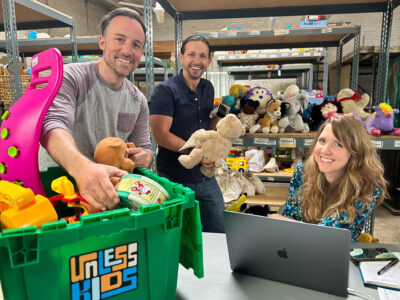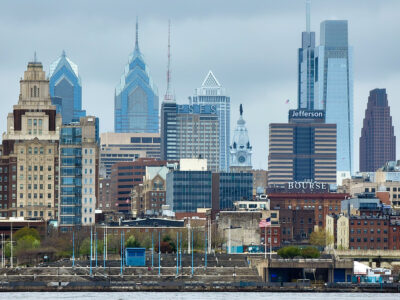The first time the phrase “Silicon Valley” was used to describe a pretty swath of orchards south of San Francisco where early computer chip manufacturers were concentrating was in 1970. That was nearly 50 years ago.
Branding can have impressive endurance. In a half century, the phrase has gone from a near-literal reference to the silicon used in computer chips to a more general phrase to describe an industry cluster. It now defines an entrepreneurial approach or ethos that is considered the bedrock of today’s economic dynamism — one after which many a legislator lusts.
Despite repeated attempts (here and elsewhere) to stop the horror, economic development leaders and marketing specialists and civic boosters around the world continue to originate their own twist on the name to capture and catapult their thirsty pursuit of high-tech prestige. There are dozens of these — Silicon Prairie, Silicon Beach, Silicon Alley.
Suburban Philadelphia’s Route 202 corridor was in on the branding frenzy early, led by legendary Safeguard Scientifics founder Pete Musser at least as early as 2000 — before his financial ruin and revival — with “Silicon Valley Forge.” Before him, Ronald Reagan was here in 1985 with a similar message. As early as 2009, Philadelphia’s tech community questioned whether a “Philacon Valley” conversation should be replaced with a focus on building something of our own.
Are you getting the sense yet that this strategy is a very old one?
But we can’t seem to leave it alone. This week, at a healthcare investor conference in San Francisco, trade group Life Sciences Pennsylvania launched an advertising campaign to promote the region’s strengths in biomedical commercialization and health sciences by introducing “Cellicon Valley.” You know, Cellicon Valley, like Silicon Valley. Get it?
Home of the first FDA-approved CAR-T cell therapy AND the first FDA-approved gene therapy #CelliconValley #JPM18 #SFOAirport pic.twitter.com/4a1af9rfPi
— Life Sciences PA (@LifeSciencesPA) January 9, 2018
The ads were at the conference itself and elsewhere in the city, including the above one at SFO.
Economic development organization Select Greater Philadelphia paid for an article on Philly.com also talking of Cellicon Valley, perhaps inspired by a differently spelled Cellacon Valley article in Philly Mag, or maybe this round of garden-variety boasts from the state’s PA Proud Blog.
Honestly, they’re all just embarrassing.
I’m not sure those making such branding choices realize just how dated and out of touch they sound. It’s like you have something stuck in your teeth and nobody will tell you. I’m sorry to be the one, Cellicon Valley, but you have something in your teeth. You look silly.
Now, here’s the crummy part of this. Philadelphia really does have strengths in the sciences. That is absolutely something to build on. But not with decades-old, tone-deaf branding efforts that have been squashed here locally before.
We’ve won over regional leaders like Roseanne Rosenthal, the much esteemed chief of state-backed investment firm Ben Franklin Technology Partners, who in turn twisted the arm of Independence Blue Cross CEO Dan Hilferty to stop using the Silicon Valley messaging. Smart cities have abandoned the Silicon Valley marketing shtick and gone about the serious business of promoting new business clusters. More say we should be learning from Silicon Valley’s mistakes, not continually copying its hackneyed marketing.
If you still can’t quite understand why recreating an over-used, half-century-old branding tactic is lazy, consider the irony. Adult humans repeatedly and inexhaustibly use the exact same marketing approach to convey that they think their region is innovative. Using an old idea to say you’re full of new ideas is self-defeating. It doesn’t do the job. Nothing transformative ever looks like what came before it. Surely no great cluster will be touted the same way as some Bay Area orchard was 50 years ago.
Reach for something new. Your friendly local tech community, which has had to endure the Silicon puns from media and policymakers for years, is here to help. Let’s start here: If a marketing firm ever suggests you should use “Silicon” branding ever again, fire them. They’re not doing their job.
Economic development has changed. Every city needs an innovation cluster to thrive. Silicon Valley offers lots of lessons to learn from (painful ones, especially these days), but its branding shouldn’t be among them.
Before you go...
Please consider supporting Technical.ly to keep our independent journalism strong. Unlike most business-focused media outlets, we don’t have a paywall. Instead, we count on your personal and organizational support.
3 ways to support our work:- Contribute to the Journalism Fund. Charitable giving ensures our information remains free and accessible for residents to discover workforce programs and entrepreneurship pathways. This includes philanthropic grants and individual tax-deductible donations from readers like you.
- Use our Preferred Partners. Our directory of vetted providers offers high-quality recommendations for services our readers need, and each referral supports our journalism.
- Use our services. If you need entrepreneurs and tech leaders to buy your services, are seeking technologists to hire or want more professionals to know about your ecosystem, Technical.ly has the biggest and most engaged audience in the mid-Atlantic. We help companies tell their stories and answer big questions to meet and serve our community.
Join our growing Slack community
Join 5,000 tech professionals and entrepreneurs in our community Slack today!





